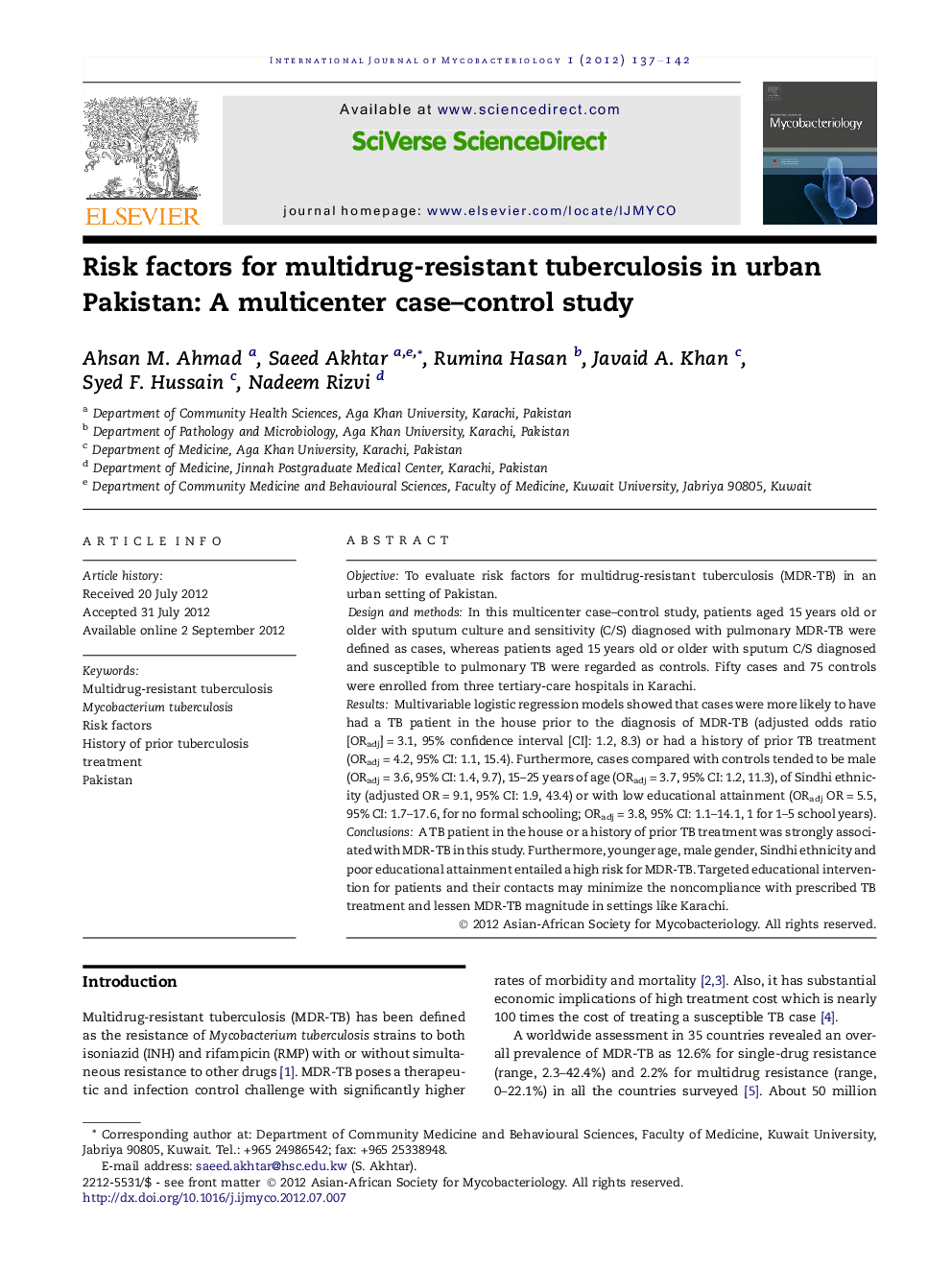| Article ID | Journal | Published Year | Pages | File Type |
|---|---|---|---|---|
| 3405309 | International Journal of Mycobacteriology | 2012 | 6 Pages |
ObjectiveTo evaluate risk factors for multidrug-resistant tuberculosis (MDR-TB) in an urban setting of Pakistan.Design and methodsIn this multicenter case–control study, patients aged 15 years old or older with sputum culture and sensitivity (C/S) diagnosed with pulmonary MDR-TB were defined as cases, whereas patients aged 15 years old or older with sputum C/S diagnosed and susceptible to pulmonary TB were regarded as controls. Fifty cases and 75 controls were enrolled from three tertiary-care hospitals in Karachi.ResultsMultivariable logistic regression models showed that cases were more likely to have had a TB patient in the house prior to the diagnosis of MDR-TB (adjusted odds ratio [ORadj] = 3.1, 95% confidence interval [CI]: 1.2, 8.3) or had a history of prior TB treatment (ORadj = 4.2, 95% CI: 1.1, 15.4). Furthermore, cases compared with controls tended to be male (ORadj = 3.6, 95% CI: 1.4, 9.7), 15–25 years of age (ORadj = 3.7, 95% CI: 1.2, 11.3), of Sindhi ethnicity (adjusted OR = 9.1, 95% CI: 1.9, 43.4) or with low educational attainment (ORadj OR = 5.5, 95% CI: 1.7–17.6, for no formal schooling; ORadj = 3.8, 95% CI: 1.1–14.1, 1 for 1–5 school years).ConclusionsA TB patient in the house or a history of prior TB treatment was strongly associated with MDR-TB in this study. Furthermore, younger age, male gender, Sindhi ethnicity and poor educational attainment entailed a high risk for MDR-TB. Targeted educational intervention for patients and their contacts may minimize the noncompliance with prescribed TB treatment and lessen MDR-TB magnitude in settings like Karachi.
